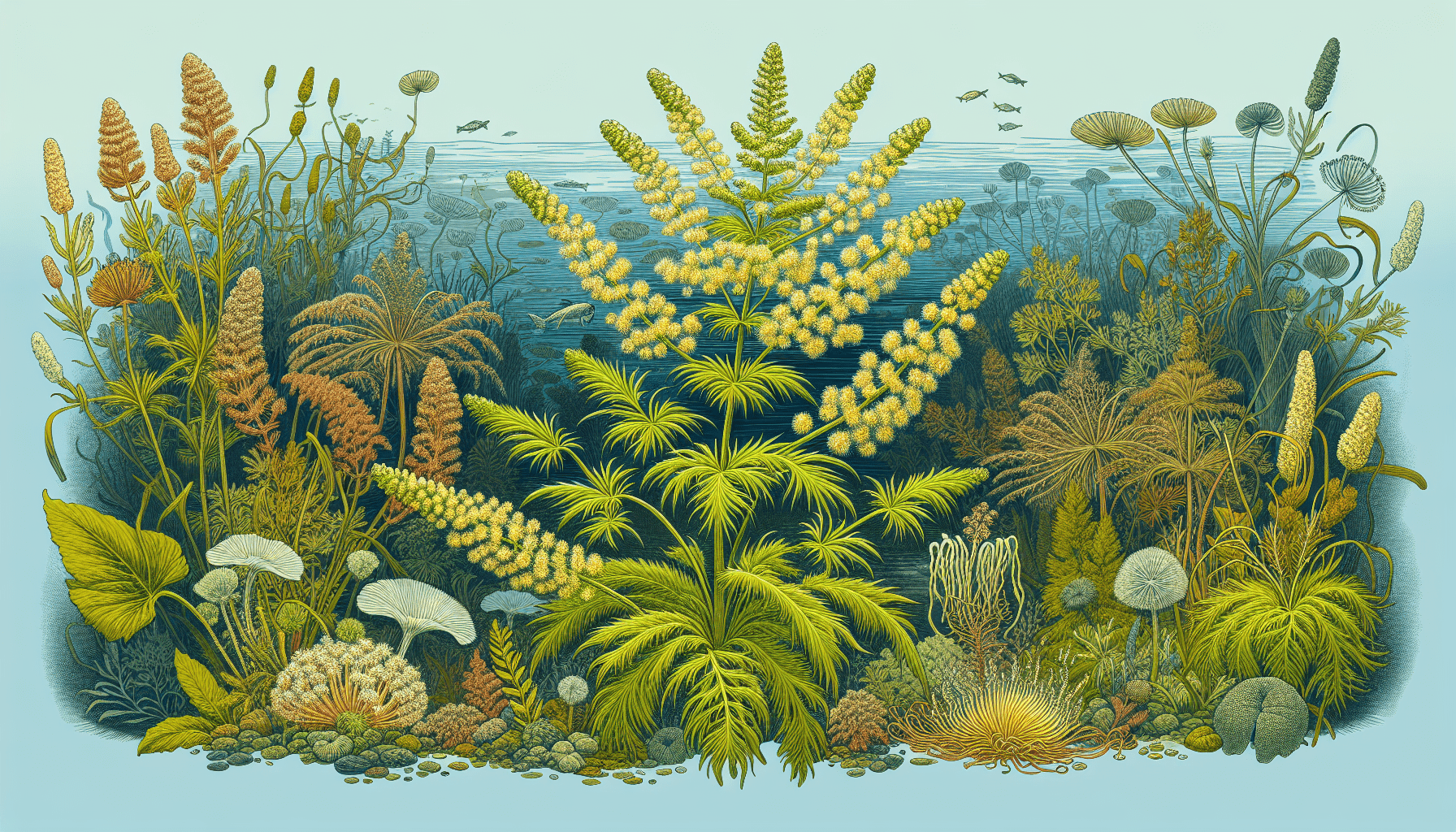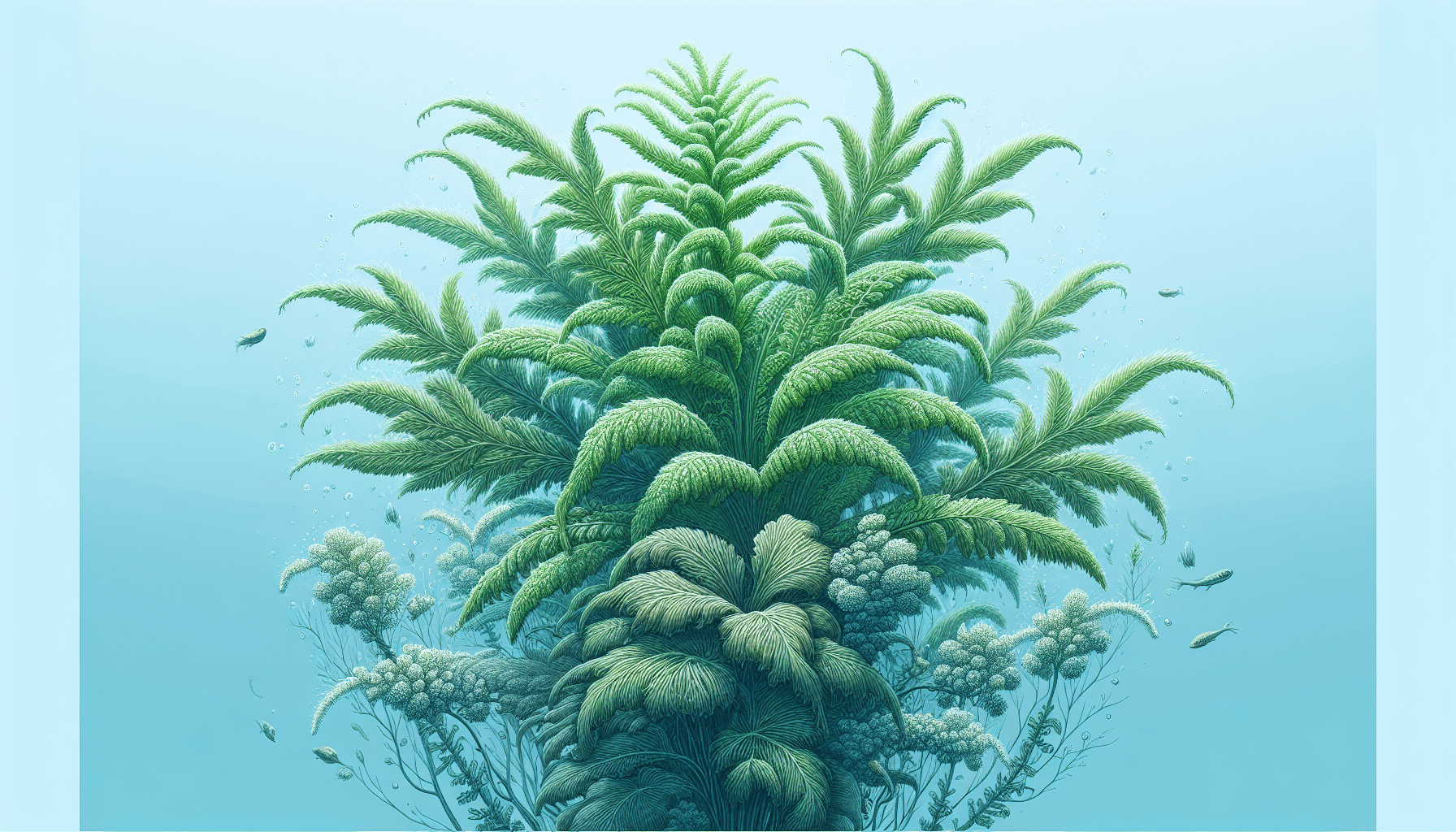The exploration at hand addresses the pivotal subject of Myriophyllum Sibiricum, an aquatic weed prevalent in freshwater habitats. You will gain insights concerning its identification, botanical peculiarities, and the impact of this plant species on the ecosystem it inhabits. This intricate discourse provides indispensable understanding for environmental scientists, aquatic ecologists, and those who possess keen interest in aquatic botany, in order to comprehend more thoroughly the intricate dynamics that govern freshwater environments.

Description of Myriophyllum Sibiricum
Myriophyllum Sibiricum, commonly known as Siberian watermilfoil, is a perennial aquatic plant. It belongs to the Myriophyllum genus and the Haloragaceae family. This aquatic weed is often found in freshwater environments worldwide.
Characteristics of the plant structure
The plant structure of the Myriophyllum Sibiricum is characterized by long, multi-branched stems that are flexible yet robust. The stems, which can range from red to purplish-brown in color, bear an ample amount of meticulously adorned leaves arranged in whorls of four to six.
Color and visual attributes
Predominantly, the color of the plant spikes from yellow-green to reddish-green, exhibiting a diverse color palette. A distinctive attribute of this species is the tiny, pink or red flowers sprouting intermittently along the plant’s stem during the blooming season.
Size and growth form
Myriophyllum Sibiricum is a moderately fast-growing plant, capable of reaching lengths of up to several meters, depending on its habitat conditions. The growth form of the plant is emergent, indicating that while the roots are submerged, the leaves and flowers can extend above the water surface.
Habitat of Myriophyllum Sibiricum
The natural habitat of the Myriophyllum Sibiricum plant is varied, encompassing an array of water bodies.
Common environments where the plant is found
Typically, you will find the Myriophyllum Sibiricum in stationary or slow-moving waters. These environments include ponds, lakes, reservoirs, canals, and slow-moving streams.
Ideal water and soil conditions
The species thrive in a wide range of water conditions. However, it favors alkaline water bodies with dense, clayey bottom soil. It can survive in somewhat saline waters, although its preference is fresh, temperate aquatic environments.
Geographical distribution
Geographically, the plant is native to Northern Asia and has spread to Europe, North America, and Australia, where it’s now considered invasive.
Life Cycle of Myriophyllum Sibiricum
Understanding the life cycle of Myriophyllum Sibiricum is instrumental in controlling its growth and managing its impact on aquatic ecosystems.
Life stages of the plant
The plant has four primary life stages: Seed, juvenile, flowering, and dormant. The seeds germinate in spring when the temperature rises, growing into juvenile plants. They bloom in the summer forming flowers before going dormant in winter.
Seasonal changes and impact on growth
Seasonal changes have a significant impact on the growth of the Myriophyllum Sibiricum. The plant proliferates during the warmer months of the year and retreats into a dormant state during colder periods.
Reproduction and seeding
The mode of reproduction for this plant species is primarily through seeds, and it can lay dormant for long periods in the sediment. Its unique ability to propagate through fragments of stems or roots also aids in its rapid spread.

Utility of Myriophyllum Sibiricum
Despite its reputation as an invasive weed, Myriophyllum Sibiricum has several useful purposes.
Role in aquatic ecosystems
In natural aquatic ecosystems, Myriophyllum Sibiricum aids in water purification through the absorption of excess nutrients in the water. It contributes to oxygen production and provides shelter and nesting sites for fish and other aquatic organisms.
Usage in aquariums and decorative displays
For those with an interest in aquascaping, the plant’s beautiful color hues and intricate leaf structures make it an attractive choice for decorative purposes in aquariums or ornamental ponds.
Medical and pharmaceutical usage, if any
Presently, there are no known pharmaceutical or medical uses for Myriophyllum Sibiricum. However, like many plant species, the potential for future medicinal applications should not be dismissed, pending further research.
Negative Impact of Myriophyllum Sibiricum
As with any invasive species, Myriophyllum Sibiricum has a host of negative impacts on its environment.
Potential for overgrowth and choking of water bodies
Due to its rapid growth rate and reproduction potential, Myriophyllum Sibiricum can quickly overrun a body of water, creating dense mats on the surface that block sunlight and restrict oxygenation, leading to suffocation of the underwater flora and fauna.
Implications for local fauna and biodiversity
By out-competing native aquatic plants, Myriophyllum Sibiricum can cause a drastic reduction in local biodiversity, disrupting the balance of the local ecosystem and negatively impacting the fauna that rely on these native species as their primary source of shelter or food.
Effects on human activity, such as boating or fishing
Dense growths of this plant are capable of entangling motors and fishing gears, posing significant challenges to boating, swimming, and fishing activities.
Management and Control of Myriophyllum Sibiricum
The management and control strategies for Myriophyllum Sibiricum involve preventive measures, removal or reduction methods, and legislative action.
Preventative measures to control growth
Preventive strategy entails reducing the introduction and spread of this species by monitoring and controlling the plant trade and by cleaning any equipment that comes into contact with contaminated waters.
Methods of removal or reduction
Several methods can be employed to control the spread of Myriophyllum Sibiricum, including mechanical (hand-pulling, cutting, or harvesting), chemical (using approved herbicides), and biological methods (using specific herbivorous insects).
Legislation or conservation efforts related to the plant
The legislation surrounding Myriophyllum Sibiricum tries to limit its spread through plant trade restrictions and designation of the species as a prohibited invasive species in many regions. Conservation efforts focus on protecting native biodiversity and maintaining the health of aquatic ecosystems by controlling the population of this invasive plant.
Cultivation of Myriophyllum Sibiricum
The cultivation of Myriophyllum Sibiricum requires a range of conditions to ensure its successful growth.
Ideal conditions for cultivation
Because it naturally exists in stationary or slow-moving waters, cultivating Myriophyllum Sibiricum requires a similar environment. An abundance of sunlight, rich organic material, and alkaline water conditions tend to yield the best results.
Tips for growing in aquariums or ponds
For cultivating the plant in aquariums or ponds, it is imperative to maintain appropriate nutrient levels in the water and ensure adequate aeration, as oxygen improves the plant’s overall health. Regular pruning is advisable to control the plant’s spread.
Common issues encountered during cultivation
Some common issues experienced during the cultivation process include overgrowth, nutrient imbalances leading to unhealthy plants, and susceptibility to plant diseases and pests.
Interactions of Myriophyllum Sibiricum with other Species
The interaction between Myriophyllum Sibiricum and other species can have far-reaching implications on the environment, hence it is crucial to understand these interactions.
Symbiotic relationships with other plants or organisms
While conclusive studies regarding any symbiotic relationships are yet to be established, it is plausible that the Myriophyllum Sibiricum could engage in mutualistic interactions with other aquatic organisms that thrive in similar conditions.
Predators or pests that affect the plant
There are a few known biological control agents such as certain insects that use the plant as a food source. Also, diseases caused by pathogenic bacteria or fungi can affect the plant.
Effects on the local ecosystem
As previously discussed, the proliferation of Myriophyllum Sibiricum can disrupt local ecosystems by out-competing and displacing native aquatic plants. Such changes can have a cascading effect on the overall health and biodiversity of the ecosystem.
Scientific Classification of Myriophyllum Sibiricum
Myriophyllum Sibiricum has a characteristic position in the taxonomical hierarchy of species.
Taxonomical hierarchy of the species
The species falls under the Kingdom Plantae; phylum Tracheophyta; class Magnoliopsida; order Saxifragales; family Haloragaceae; and finally, the genus Myriophyllum.
Characteristic traits defining its classification
Characteristically, this species is defined by its submerged or emergent aquatic habitat, long branched stems, whorled leaf pattern, and small, emergent flowers.
Comparison with closely related species or variants
There are numerous species within the Myriophyllum genus, each with their unique characteristics. However, they all share common features like the whorled leaf structure, preferring aquatic habitats, and the capability for rapid proliferation.
Studies and Research on Myriophyllum Sibiricum
Research on Myriophyllum Sibiricum has played and continues to play a crucial role in understanding the plant’s biology and its influence on the aquatic ecosystem.
Key findings from scientific research
Studies have primarily focused on understanding the weed’s life cycle, reproductive strategies, and spread. They have also delved into its impact on local ecosystems and how best to control its rapid spread.
Unresolved questions or ongoing studies
Despite extensive research, several questions remain unanswered, such as the plant’s precise ecological role and the effects of its continued spread on global biodiversity. Ongoing studies continue to address these and other related issues.
Implications for understanding of aquatic ecosystems or botany
Ultimately, a comprehensive understanding of Myriophyllum Sibiricum can aid in better management of aquatic ecosystems, contribute significantly to the field of invasive botany, and provide insight into ecological conservation strategies. The plant serves as a quintessential example of the effects and management of invasive species, offering crucial lessons for future conservation efforts.